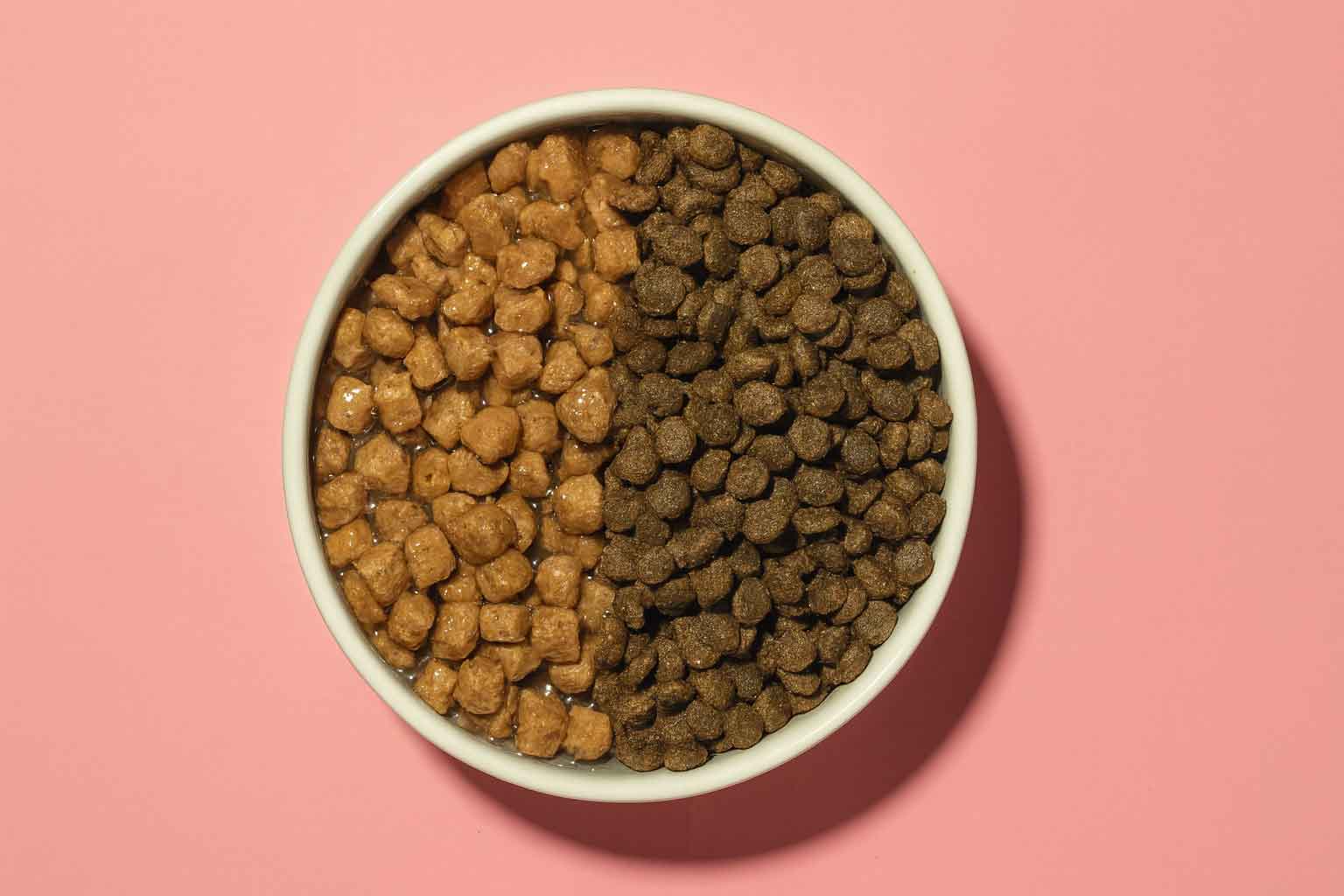
How to Compare Pet Foods Like a Nutritionist
When you’re choosing food for your dog or cat, the numbers on the label can be misleading. A kibble with 25% protein might look higher in protein than a wet food with 10%, but the truth is — that’s not always the case.
Why?
Because pet food labels list nutrients on an “as-fed” basis, which includes water (moisture). And moisture can vary dramatically between dry and wet foods.
To make a fair comparison, nutritionists use the dry matter basis (DMB) — a way to calculate the nutrient content without water.
In this guide, you’ll learn:
- Why dry matter comparisons matter.
- How to calculate dry matter values.
- How to use DMB to make smarter pet food choices.
- What other factors to consider beyond the numbers.
Why You Can’t Compare Labels Directly
A typical dry kibble has around 10% moisture, while canned food can have 70–80% moisture. This difference means the nutrient percentages are based on very different amounts of water — so comparing them “as is” is like comparing apples to oranges.
Example:
- Dry food: 25% protein, 10% moisture.
- Wet food: 10% protein, 75% moisture.
At first glance, dry food seems higher in protein. But once you remove the water, the picture changes.
Step 1: The Dry Matter Formula
To calculate dry matter, use this formula:
Dry Matter % = (Nutrient % as-fed ÷ (100 - Moisture %)) × 100
Where:
- Nutrient % as-fed = The value from the label (protein, fat, etc.).
- Moisture % = The moisture content listed on the label.
Step 2: Example Calculation
Let’s compare the protein content of a kibble vs. a canned food.
Dry Food:
- Protein: 25%
- Moisture: 10%
Dry Matter Protein = (25 ÷ (100 - 10)) × 100
= (25 ÷ 90) × 100
= 27.8% protein DMB
Wet Food:
- Protein: 10%
- Moisture: 75%
Dry Matter Protein = (10 ÷ (100 - 75)) × 100
= (10 ÷ 25) × 100
= 40% protein DMB
Result: The wet food actually contains more protein on a dry matter basis than the kibble — even though the label suggested otherwise.
Step 3: Compare All Key Nutrients
You can use the dry matter method for any nutrient listed in the Guaranteed Analysis:
- Protein – Supports muscle maintenance and overall health.
- Fat – Provides energy and essential fatty acids.
- Fiber – Supports digestion and satiety.
- Ash (if listed) – Measures total mineral content.
By converting each to DMB, you get a true side-by-side comparison.
Step 4: Consider Calorie Content Too
Even when nutrient percentages look good, calorie density matters. A food might be high in fat (and therefore calories), which could cause weight gain if portions aren’t adjusted.
Look for the kcal per cup (dry food) or kcal per can (wet food) — often listed under “calorie content” on the label.
Step 5: Beyond the Numbers — Quality Matters
Numbers are important, but the quality of ingredients matters just as much:
- Named proteins (e.g., chicken, salmon) over generic “meat meal.”
- Clear sources of fats (e.g., chicken fat, salmon oil).
- Minimal fillers (corn, wheat, soy).
- Beneficial extras (omega-3s, probiotics, glucosamine).
For more guidance on evaluating quality, read our post: How to Read a Pet Food Label Like a Pro.
Step 6: Match to Your Pet’s Needs
Every pet’s nutritional needs vary based on:
- Life stage – Puppy/kitten, adult, senior.
- Activity level – Couch potato vs. highly active.
- Breed & size – Different metabolism and joint needs.
- Health conditions – Allergies, kidney disease, weight management.
At FAMMO.ai, we tailor food recommendations to your pet’s unique profile, so you don’t have to do the math yourself.
Step 7: Sample Comparison Table
| Food Type | Protein (as-fed) | Moisture | Protein (DMB) | Fat (as-fed) | Fat (DMB) |
|---|---|---|---|---|---|
| Dry Kibble A | 25% | 10% | 27.8% | 15% | 16.7% |
| Wet Food B | 10% | 75% | 40% | 5% | 20% |
Conclusion: Wet Food B has higher protein and fat on a DMB than Kibble A — despite what the “as-fed” numbers suggest.
Key Takeaways
- Always convert nutrients to dry matter basis before comparing pet foods.
- Look beyond the numbers — ingredient quality and calorie content matter.
- Match your choice to your pet’s specific needs.
- Use professional resources like FAMMO’s Nutrition Category to make informed decisions.
Final Thoughts
Pet food marketing can be tricky, but numbers don’t lie — when you know how to read them. Using the dry matter method puts you in control, allowing you to compare foods fairly and choose the best option for your pet’s health.
If you want to skip the math entirely, FAMMO.ai can analyze hundreds of foods, compare nutrient content, and recommend the ones that fit your pet’s unique needs. Because great pet care starts with great nutrition.
Comments
Very good tnx fammo